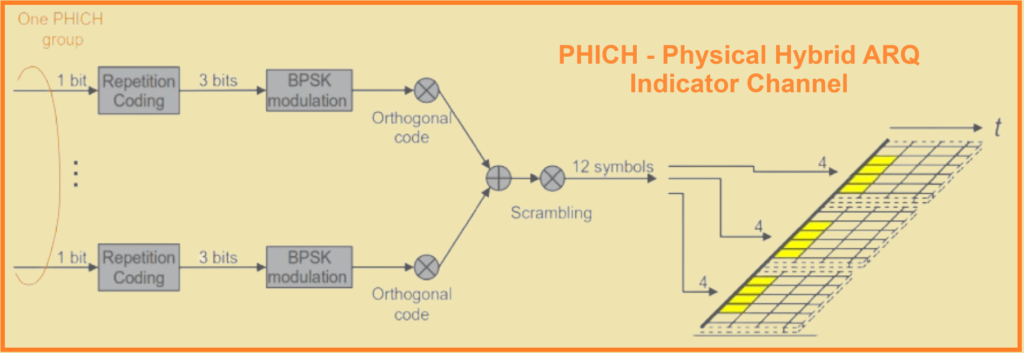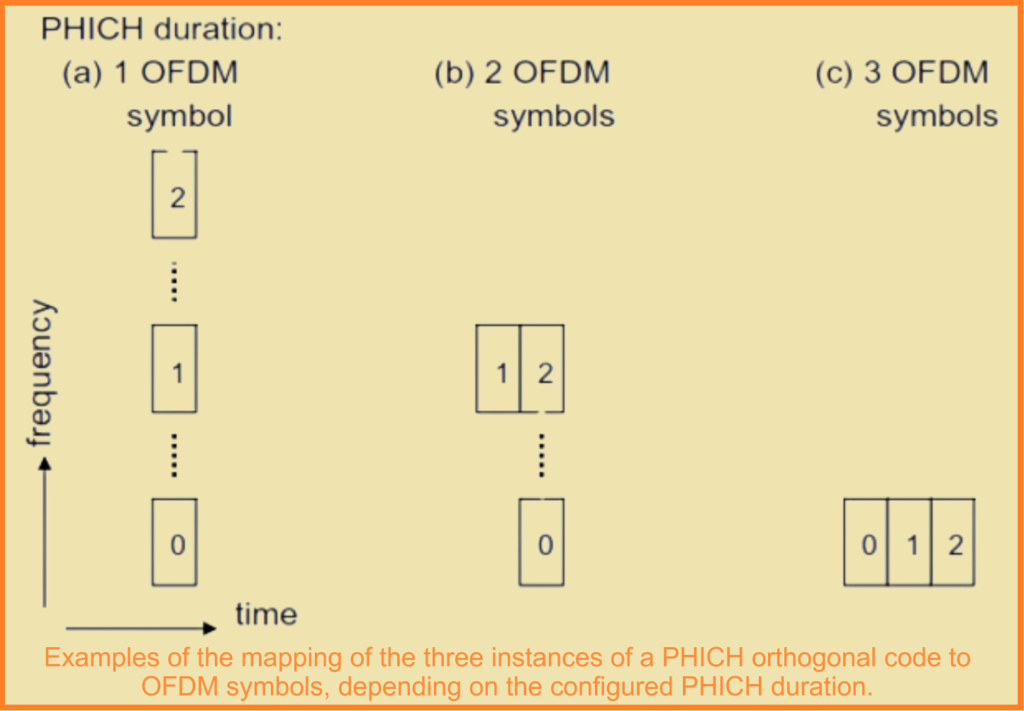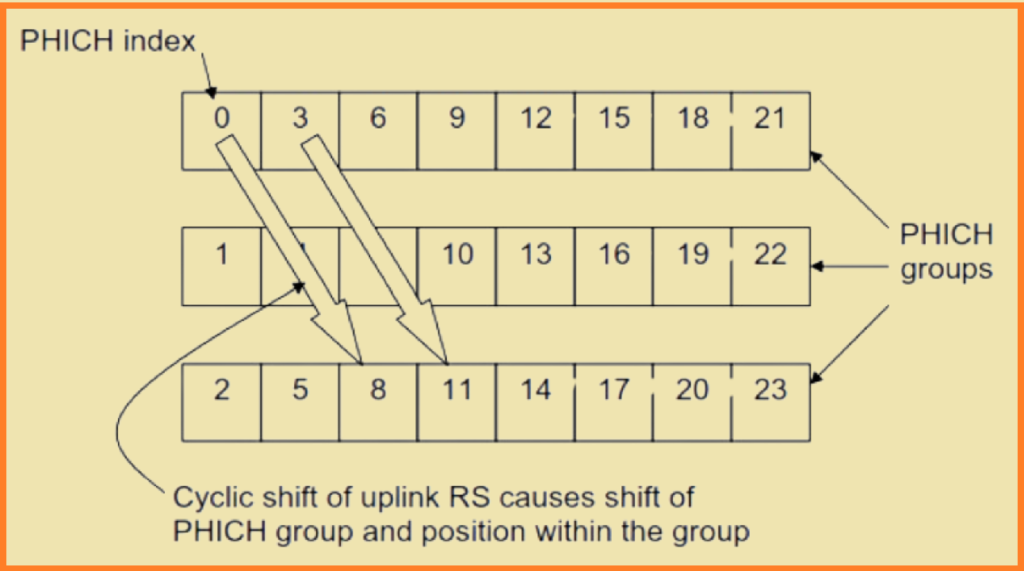In LTE, the Physical Hybrid-ARQ Indicator Channel (PHICH) is essential for transmitting hybrid-ARQ acknowledgements in response to uplink shared channel (UL-SCH) transmissions. Each terminal expecting an acknowledgement in a subframe has a corresponding PHICH.
Physical Hybrid-ARQ Indicator Channel (PHICH).

PHICH Structure and Transmission.
Each PHICH carries a single bit of information, which is repeated three times for reliability. This bit is then modulated and spread with a spreading factor of four before being mapped to three Resource Element Groups (REGs). Multiple PHICHs are grouped into a PHICH group, and within this group, the PHICHs are code-multiplexed using different orthogonal spreading sequences. This method of code-division multiplexing (CDM) ensures that the power differences between subcarriers are minimized compared to frequency-division multiplexing (FDM).

The capacity of the PHICH is determined by the number of configured PHICH groups, with each group assigned a unique frequency resource. For normal cyclic prefix (CP), there are eight 3GPP-defined orthogonal sequences available, while for extended CP, there are four.

Power Control and Error Rates.
The power settings for the PHICH, which affect the PHICH error rate, are not explicitly specified and are considered an implementation detail. However, 3GPP typically assumes an ACK-to-NAK error rate of 10-2 and an NAK-to-ACK error rate between 10-3 and 10-4. An incorrect NAK-to-ACK error can result in the loss of a transport block at the MAC level, necessitating recovery through RLC retransmissions, which introduces delays.
To ensure robustness, the PHICH error rates are set lower than those of the Physical Control Format Indicator Channel (PCFICH). As such, the PHICH mapping is designed to be independent of the PCFICH value, using a semi-static configuration to reserve resources for PHICH.
PHICH Duration.
In LTE, the Physical Hybrid-ARQ Indicator Channel (PHICH) is typically transmitted in the first Orthogonal Frequency Division Multiplexing (OFDM) symbol. However, in certain challenging propagation environments, limiting the PHICH to a single OFDM symbol may unnecessarily restrict its coverage. To address this, it is possible to configure the PHICH duration to span three OFDM symbols. When this configuration is used, the control region in all subframes is extended to three OFDM symbols.

The configuration of the PHICH is included in the system information, specifically in the Master Information Block (MIB) on the Broadcast Channel (BCH). One bit in the MIB indicates whether the PHICH duration is one or three OFDM symbols, and two bits indicate the amount of resources allocated for the PHICH.
PHICH Acknowledgement Mapping.
There is no explicit indication in the scheduling grant regarding which specific PHICH the terminal should expect the acknowledgement from. Instead, the PHICH number used for the transmission of the acknowledgement is derived from the number of the first Control Channel Element (CCE) of the Physical Downlink Control Channel (PDCCH) carrying the grant. This implicit mapping ensures that the terminal knows where to look for its acknowledgement without needing additional signaling.
Signaling and Resource Allocation.
The Physical Broadcast Channel (PBCH) not only broadcasts essential system information but also signals the number of PHICH groups configured within the cell. This information helps UEs determine which remaining resource elements in the control region are allocated for PDCCHs.
Implicit PHICH Association.
To streamline operations and avoid additional signaling overhead, LTE implicitly associates each PHICH with the index of the lowest uplink resource block used for the corresponding PUSCH transmission. This relationship ensures that UEs can determine which PHICH will carry the ACK/NACK response without explicit signaling for each PUSCH transmission.
In scenarios involving multiple UEs sharing the same resource blocks for PUSCH transmissions (such as uplink multi-user MIMO), LTE employs different cyclic shifts of the uplink demodulation reference signals. This differentiation allows each UE to receive its ACK/NACK on a different PHICH within different PHICH groups, thereby enabling effective load balancing.

PHICHs are transmitted on the same set of antenna ports as the PBCH. If multiple antenna ports are utilized, transmit diversity techniques are applied to enhance reliability and mitigate potential signal fading and interference issues.